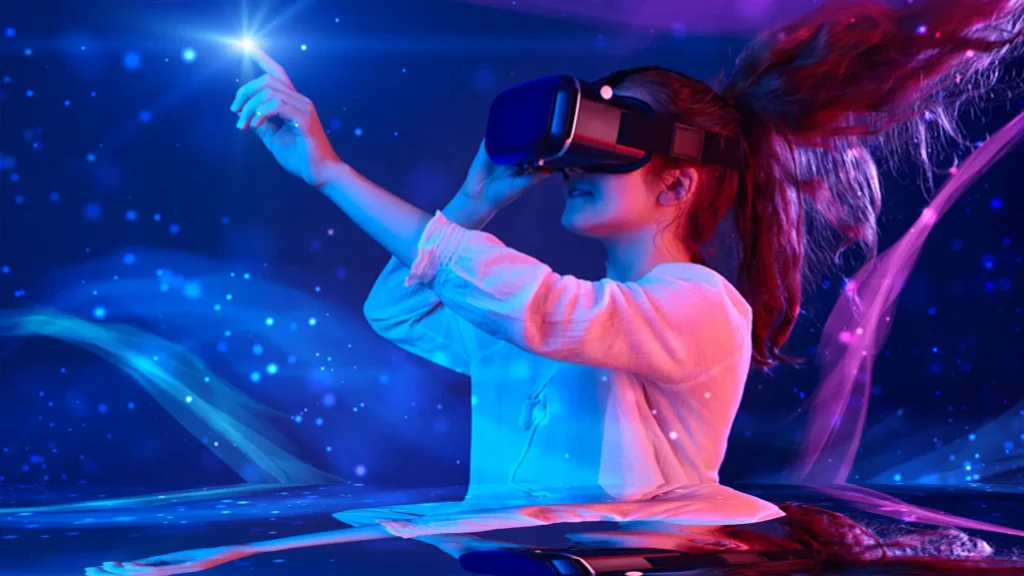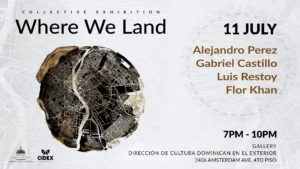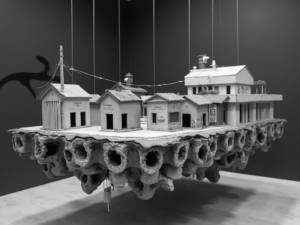By Juan Butten
Almost a month ago, I visited an exhibition at the Massachusetts College of Art and Design, and I was captivated by an interactive work designed by a student from that institution. Although I don’t remember their name, the fascination it inspired in me lingers in my memory. In this digital age, interactivity and technology have radically transformed the way we experience art. While wearing virtual reality glasses, I reflected on contemporary works that utilize tools such as augmented reality (AR), virtual reality (VR), and interactive installations. These innovations have opened a new horizon in the relationship between the viewer and the artwork, enriching the aesthetic experience and redefining the viewer’s role as an active participant in the artistic process.
Augmented reality and virtual reality have revolutionized our interaction with art. Through mobile devices or special glasses, we can immerse ourselves in digital worlds that complement or transform the original work. Artists like Olafur Eliasson have used AR to allow viewers to interact with their installations, creating experiences that go beyond passive contemplation. This technology not only adds layers of information but also invites exploration and discovery of new dimensions of the work.
On the other hand, virtual reality offers an immersive experience that transports the viewer to entirely new environments. Works like “The Night Cafe” by Mac Cauley, which recreates Van Gogh’s famous café in a virtual setting, allow users to explore and experience the artwork interactively. This type of immersion transforms our perception of art, enabling us to experience the work from a unique and personal perspective.
Interactive installations represent another facet of the convergence between art and technology. These works require the active participation of the viewer, who does not merely observe but becomes a co-creator of the artistic experience. A notable example is “The Obliteration Room” by Yayoi Kusama, where visitors are invited to cover a white space with colorful stickers, transforming the work as they interact with it. This dynamic empowers the viewer and reflects the ephemeral and constantly evolving nature of contemporary art.
Interactivity in installations is not limited to physical manipulation; it also includes the emotional and sensory responses of the viewer. Works like “The Interactive Color Wheel” by teamLab use projections and sensors to create environments where the viewer’s movement affects the visual landscape. Here, art becomes a dialogue between the work and the viewer, establishing an emotional connection that transcends mere observation.
Despite its many advantages, the integration of technology into art presents challenges. Dependence on technological devices can alienate some viewers, creating a gap between those who have access to these tools and those who do not. Additionally, the rapid evolution of technology raises questions about the durability and maintenance of these interactive works. It is likely that countries with greater purchasing power will have more advanced developments in this regard, but artists always find ways to bring their work to life, even with economic limitations. Art, combined with technology, will reach every corner of the planet.
However, these challenges also present opportunities for innovation and inclusion. Community projects that utilize accessible technology can democratize the artistic experience, allowing a broader audience to participate in the creation and appreciation of art. Workshops that teach participants how to use AR and VR tools can empower new generations of artists and viewers, fostering a culture of collaboration and creativity.
In conclusion, interactivity and technology have transformed the experience of contemporary art, inviting viewers to become active participants in the artistic process. Through augmented reality, virtual reality, and interactive installations, art is redefined in a context where human connection and participation are more important than ever. As we navigate these new territories, it is essential to continue exploring how these tools can enrich our understanding and appreciation of art, creating experiences that are not only visual but also deeply personal and memorable. Ultimately, today’s art is not just observed; it is lived and felt, blurring the lines between the viewer and the artwork, and establishing a dynamic dialogue that continues to evolve.









